Seafood nabe is a traditional Japanese hot pot dish that is hearty, comforting, and perfect for sharing with family and friends. This dish is becoming increasingly popular in Singapore, and it's not hard to see why. The combination of fresh seafood, vegetables, and broth creates a delicious and satisfying meal that is perfect for any occasion.
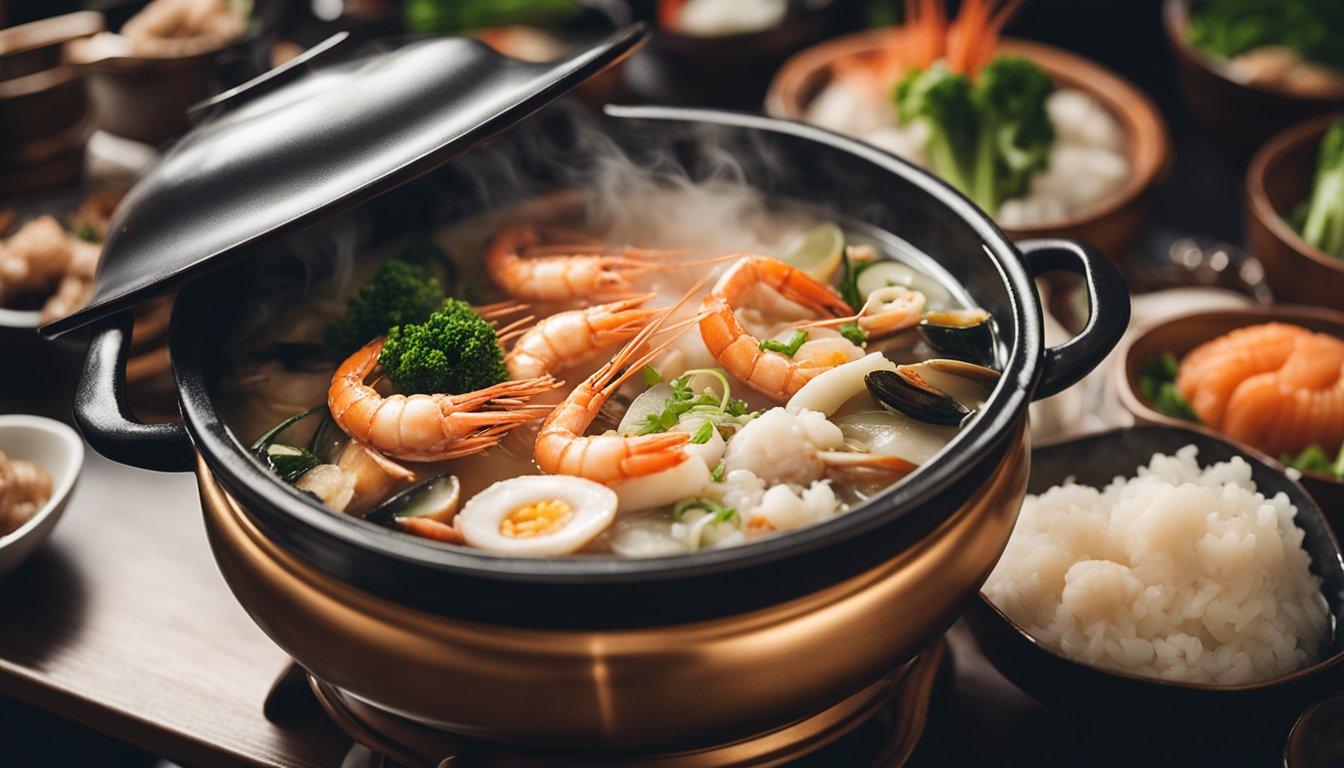
If you're looking to recreate the authentic taste of seafood nabe in your own home, there are a few key ingredients and techniques that you need to know. The broth is the heart of the dish, and it's typically made with a combination of dashi, soy sauce, and mirin. You can also add in sake, ginger, and garlic for extra flavour. The seafood and vegetables that you choose to include will depend on your personal preferences, but some popular options include prawns, clams, mussels, scallops, and mushrooms.
To prepare your seafood nabe, you'll need a portable cooker or hot pot, as this dish is typically cooked at the table. Simply add the broth and ingredients to the pot and let everything simmer until cooked through. Once everything is ready, you can dip the cooked seafood and vegetables into a homemade ponzu dipping sauce for an extra burst of flavour.
Key Takeaways
- Seafood nabe is a traditional Japanese hot pot dish that is hearty, comforting, and perfect for sharing with family and friends.
- To recreate the authentic taste of seafood nabe at home, you'll need a combination of dashi, soy sauce, mirin, and a variety of seafood and vegetables.
- Seafood nabe is typically cooked at the table in a portable cooker or hot pot, and is served with a homemade ponzu dipping sauce.
Understanding Nabe
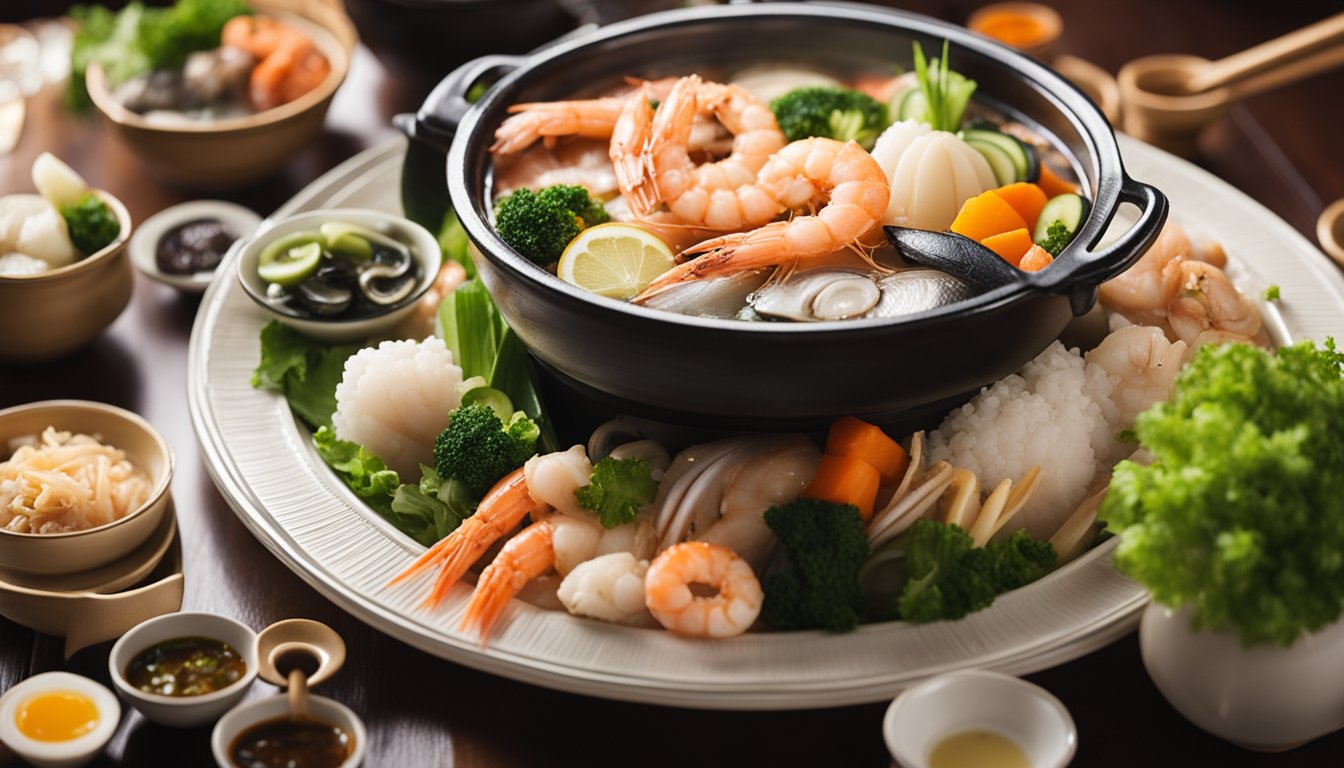
If you're looking for a comforting, hearty meal that's perfect for sharing with friends and family, then you can't go wrong with a nabe. Nabe is a Japanese hot pot dish that's traditionally eaten during the colder months of the year. It's a simple yet delicious meal that's easy to make and can be adapted to suit your tastes.
The Basics of Nabe
At its core, nabe is a one-pot dish that's made by simmering a variety of ingredients in a seasoned broth. The broth is usually made with dashi, a Japanese stock made from dried bonito flakes and kelp, but it can also be made with miso or soy sauce. The ingredients used in nabe can vary depending on the region, season, and personal preferences, but they typically include a combination of vegetables, meat, seafood, and tofu.
One of the great things about nabe is that it's a communal meal that's meant to be shared. The pot is usually placed in the center of the table, and everyone helps themselves to the ingredients they want. As the meal progresses, more ingredients can be added to the pot, and the broth becomes richer and more flavorful.
Types of Nabe
There are many different types of nabe, each with its own unique flavor and ingredients. Here are some of the most popular types of nabe:
-
Sukiyaki: This is a sweet and savory nabe made with thinly sliced beef, vegetables, and tofu, which are cooked in a broth made from soy sauce, sugar, and mirin. The dish is usually served with raw egg, which is used as a dipping sauce for the cooked ingredients.
-
Shabu Shabu: This is a nabe made with thinly sliced beef or pork, vegetables, and tofu, which are cooked in a clear broth made from dashi. The name "shabu shabu" comes from the sound the ingredients make when they're swished around in the hot pot. The dish is usually served with a dipping sauce made from soy sauce and sesame oil.
-
Yosenabe: This is a seafood nabe made with a variety of seafood, vegetables, and tofu, which are cooked in a clear broth made from dashi. The dish is usually seasoned with soy sauce and sake, and it's often served with grated daikon radish.
-
Motsunabe: This is a nabe made with beef or pork offal, vegetables, and tofu, which are cooked in a rich, spicy broth made from miso or soy sauce. The dish is popular in the Kyushu region of Japan.
No matter what type of nabe you choose, there are a few tips that will help you get the most out of your hot pot experience. First, make sure you have plenty of ingredients on hand, as nabe is meant to be a communal meal. Second, be sure to cook the ingredients in the order specified in the recipe, as some ingredients take longer to cook than others. Finally, don't be afraid to experiment with different ingredients and seasonings to create your own unique nabe recipe.
Key Ingredients for Seafood Nabe
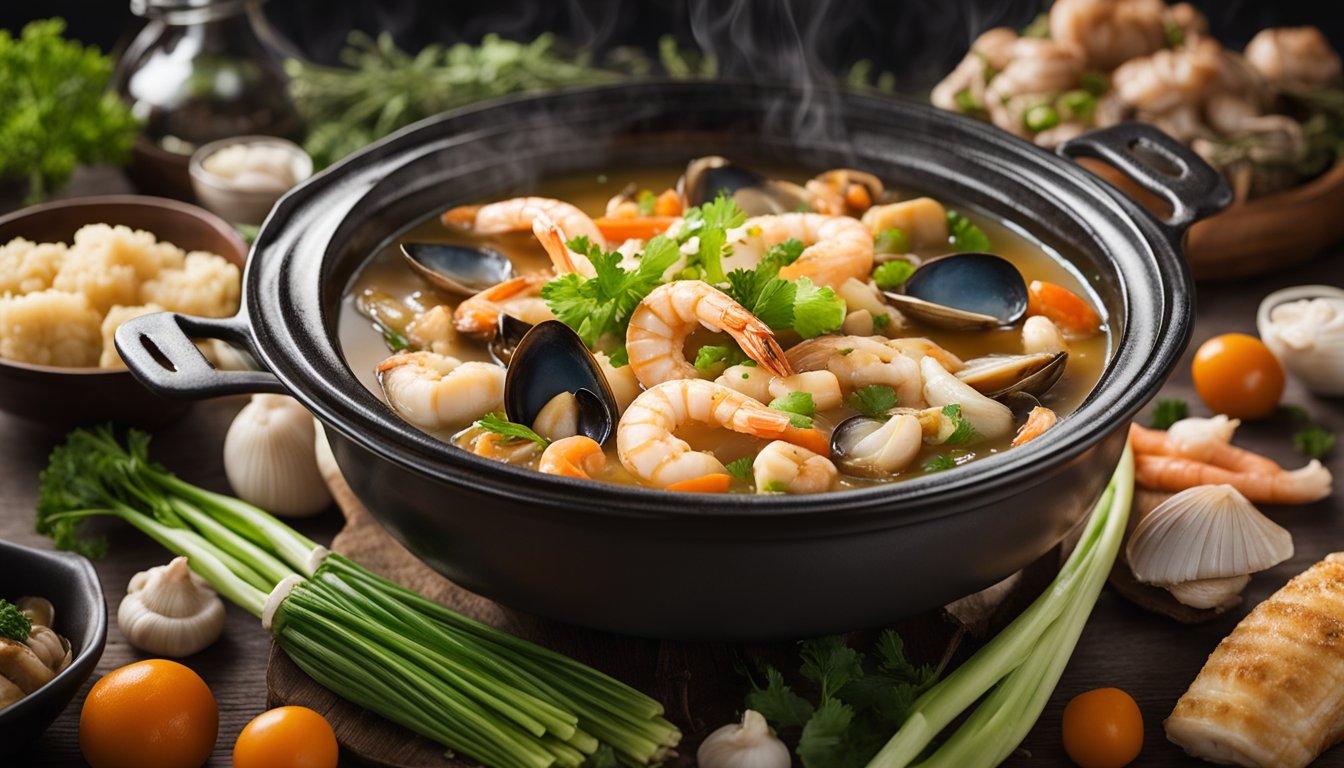
If you're a fan of hot pot dishes, you'll love the Japanese-inspired seafood nabe. This dish is a perfect way to warm up during the colder months. Here are the key ingredients you'll need to make a delicious seafood nabe.
Seafood Selection
The seafood is the star of this dish. You can choose from a variety of seafood such as salmon, clams, scallops, and prawns. Make sure to choose fresh and high-quality seafood for the best taste. You can also add fish cakes or crab meat to the mix.
Vegetables and Accompaniments
The vegetables and accompaniments are what make this dish healthy and nutritious. You can add a variety of vegetables such as napa cabbage, shiitake mushrooms, daikon, green onions, and carrots. You can also add tofu and udon noodles to make the dish more filling.
Nabe Broth Varieties
The broth is the foundation of this dish. You can choose from a variety of broths such as dashi broth, chicken broth, or a combination of both. You can also add ponzu sauce, mirin, and sake to the broth to give it a tangy and sweet flavour.
In conclusion, seafood nabe is a delicious and healthy dish that is perfect for a cold day. With fresh seafood, nutritious vegetables, and a flavourful broth, you can create a dish that is both satisfying and delicious.
Preparing Your Seafood Nabe
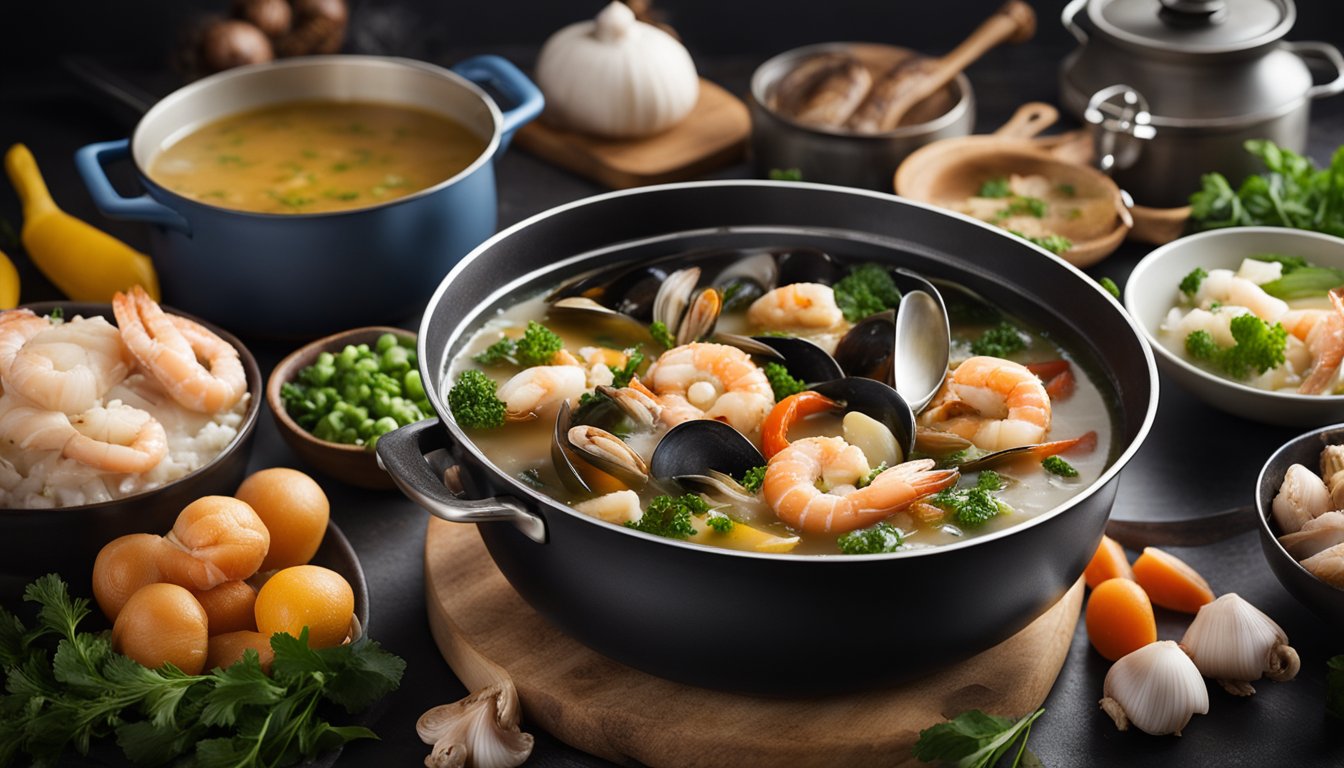
Assembling the Ingredients
Before starting the cooking process, you need to assemble all the ingredients for your seafood nabe. Here are the ingredients you will need:
- Seafood and/or fish such as red mullet, turbot, sea breams, salmon, cod, cod cheeks, scallops, prawns, clams, mussels, or any fresh and in-season seafood of your choice.
- Vegetables such as Chinese cabbage, leeks, carrots, shiitake mushrooms, enoki mushrooms, firm tofu, and any other vegetables you like.
- Meatballs or any other meat of your choice.
- Soup base such as kombu, bonito flakes, chicken stock, or any other soup base of your choice.
- Udon noodles or any other noodles of your choice.
- Rice and chopsticks for serving.
Once you have all the ingredients, you can start preparing your seafood nabe.
Cooking Process
- First, heat up your clay pot or hotpot on the stove. Add the soup base and bring it to a boil.
- Add the vegetables, meatballs, and seafood to the pot. Make sure to add the ingredients that take longer to cook first, such as carrots and Chinese cabbage.
- After a few minutes, add the udon noodles and firm tofu to the pot.
- Use a ladle to scoop the soup over the ingredients to ensure everything is cooked evenly.
- Once everything is cooked, use chopsticks to serve the ingredients onto a bowl of rice.
Customize your seafood nabe by adding your favourite ingredients and adjusting the soup base to your liking. Here are some cooking tips to keep in mind:
- Make sure to use fresh ingredients for the best flavour.
- Adjust the heat to ensure the soup doesn't boil over.
- Use a ladle to scoop the soup over the ingredients to ensure everything is cooked evenly.
- Don't overcook the seafood to prevent it from becoming tough.
Now that you know how to prepare your seafood nabe, it's time to gather your ingredients and start cooking!
Serving and Enjoying
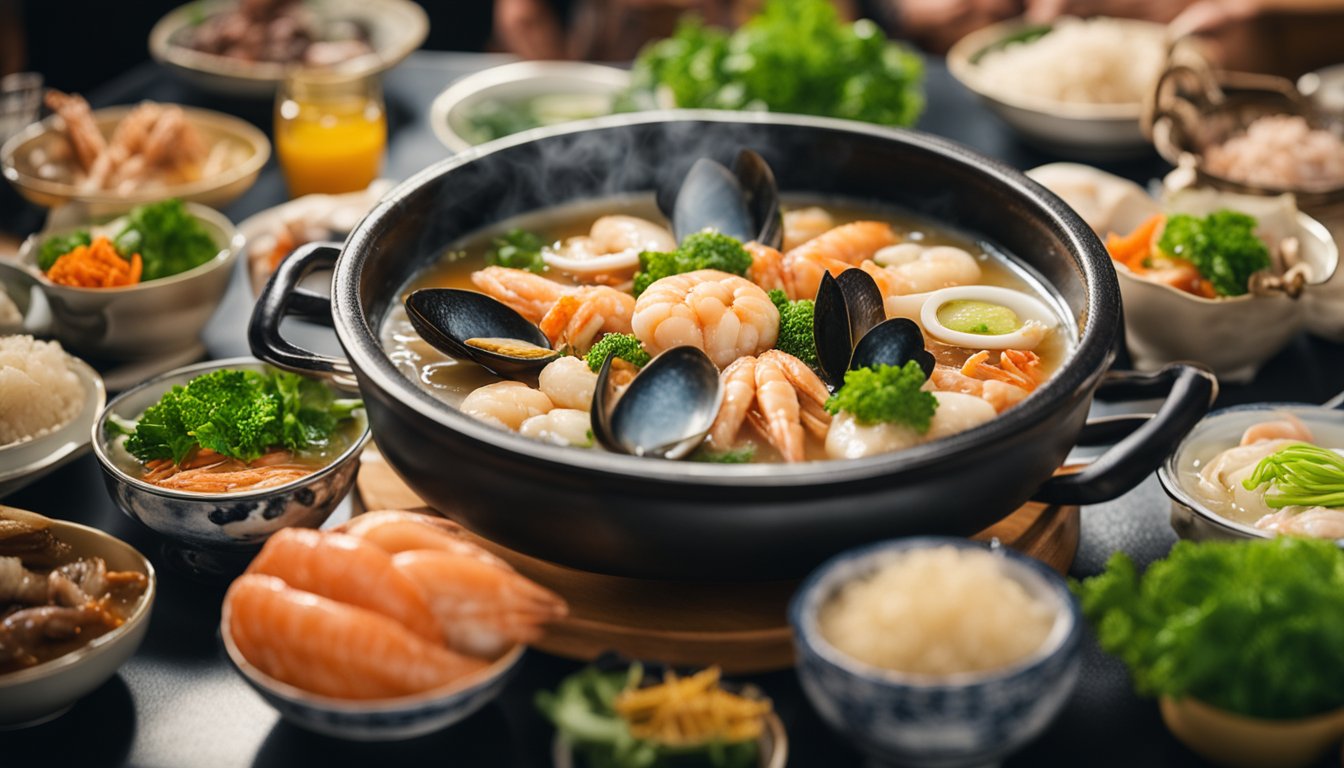
Dipping Sauces and Condiments
One of the joys of eating seafood nabe is the variety of dipping sauces and condiments that you can use to enhance the flavours of your meal. Some popular options include ponzu, sesame sauce, and chili oil.
Ponzu is a tangy citrus-based sauce that pairs well with seafood and veggies. It's made by mixing soy sauce, rice vinegar, and citrus juice. Sesame sauce, on the other hand, is a creamy and nutty sauce that's made from ground sesame seeds. It's a great option if you're looking for something rich and flavourful. Chili oil is perfect if you're looking for something spicy to add to your nabe.
To enjoy your dipping sauces, simply pour a small amount into a small dish and dip your veggies and protein into it. You can also mix and match different sauces to create your own unique flavour combinations.
Eating Etiquette
When it comes to eating seafood nabe, there are a few etiquette rules to keep in mind. First, make sure to use chopsticks to pick up your food. It's considered rude to use your hands or a fork.
Second, it's important to eat slowly and savour each bite. Don't rush through your meal or you'll miss out on the delicious flavours.
Finally, it's common to serve nabe with Japanese short-grain rice. This can help to balance out the flavours and add some additional texture to your meal.
As you enjoy your nabe, feel free to add additional veggies or protein to the pot as needed. Some popular options include shimeji mushrooms, garlic, and green onions. And if you're looking for a little extra flavour, try adding some ginger juice, ponzu sauce, mirin, or sake to the broth.
Overall, seafood nabe is a delicious and satisfying meal that's perfect for a cozy dinner at home. With a variety of dipping sauces and condiments to choose from, as well as some simple eating etiquette to follow, you're sure to have a wonderful dining experience.
Frequently Asked Questions
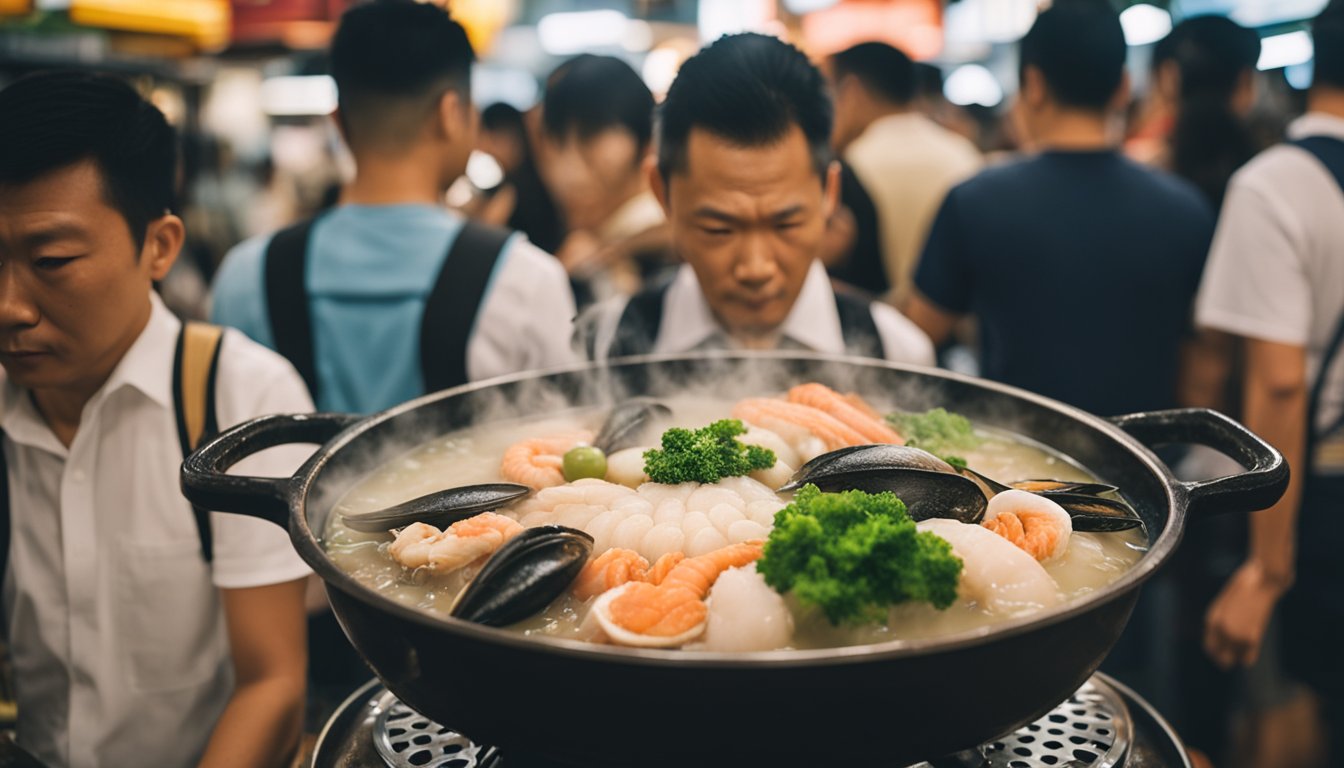
What's typically tossed into a nabe pot?
A nabe pot is a versatile dish that can be made with a variety of ingredients. Some common ingredients include seafood, meat, tofu, mushrooms, and vegetables. You can also add noodles or rice to make it a more filling meal.
How does shabu shabu differ from your usual nabe?
Shabu shabu is a type of nabe that is typically made with thinly sliced beef or pork. The meat is cooked by swishing it in boiling water before being dipped in a sauce. Shabu shabu is often served with vegetables and noodles.
Is it common to have a side of rice with nabe?
Yes, it is common to have a side of rice with nabe. The rice can be cooked separately or added to the nabe pot towards the end of the cooking process.
What goes into making a hearty Chankonabe?
Chankonabe is a type of nabe that is often eaten by sumo wrestlers. It is a hearty dish that typically includes chicken, fish, tofu, and a variety of vegetables. The broth is usually made with dashi, soy sauce, and sake.
Can you suggest some must-have veggies for a Japanese one-pot soup?
Some must-have veggies for a Japanese one-pot soup include napa cabbage, shiitake mushrooms, daikon radish, and carrots. You can also add other vegetables like spinach, bean sprouts, and onions.
What are the essential steps to whip up a cracking Yosenabe at home?
To make a delicious Yosenabe at home, start by making a dashi broth with kombu and bonito flakes. Then add your choice of protein, vegetables, and tofu to the pot. Cook everything together until the ingredients are tender and the flavours are well combined. Serve with a dipping sauce made from soy sauce, vinegar, and chili oil.
